Source: Synced
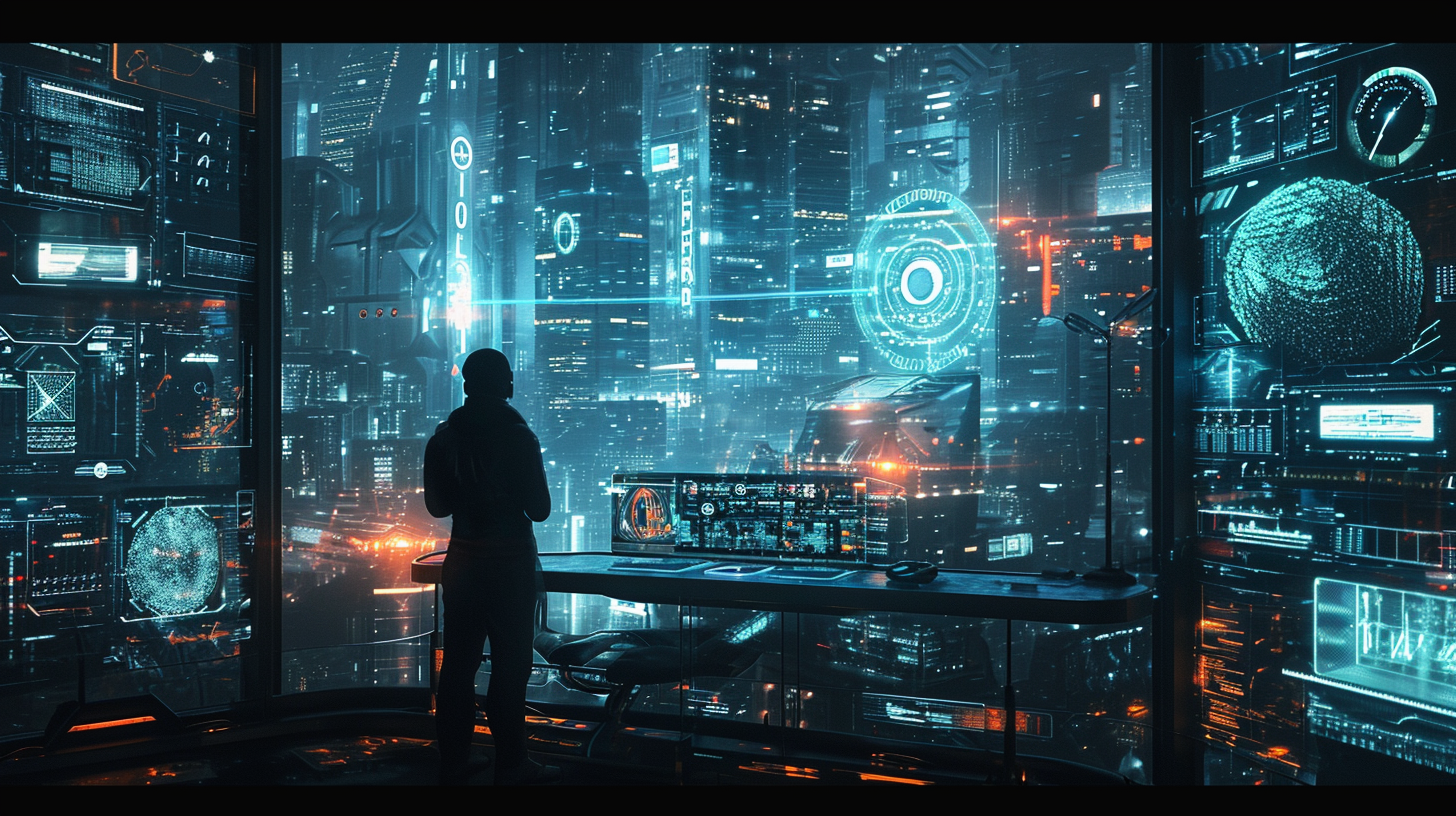
Image Source: Generated by Wujie AI
Suspected AI-generated design, criticized by peers.
Recently, a open-world survival game has been dominating many social media platforms.
"Palworld" is one of the hottest topics at the moment. Its early access version was launched on Steam on January 19th, and it sold over 2 million copies within 24 hours, and surpassed 6 million copies in just a few days.
On January 23rd, the historical peak online player count of Palworld on Steam reached 1.85 million, surpassing "CS 2" and becoming the second highest historical peak online player count game on Steam.
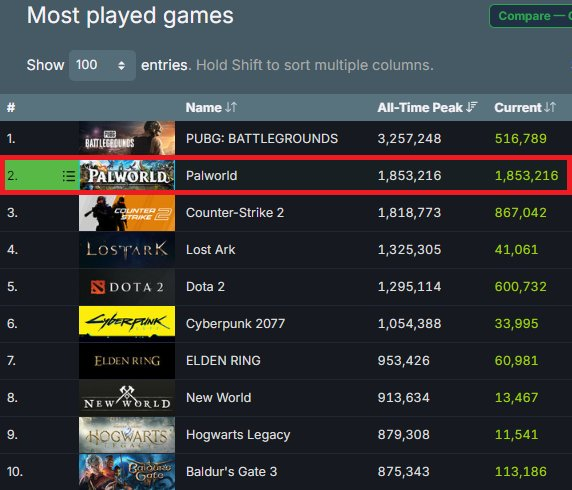
In the game world of Palworld, players can freely collect magical creatures called "Palus," dispatch them for battles, construction, mining, industrial production, and more, to enjoy a leisurely life or embark on adventurous careers.
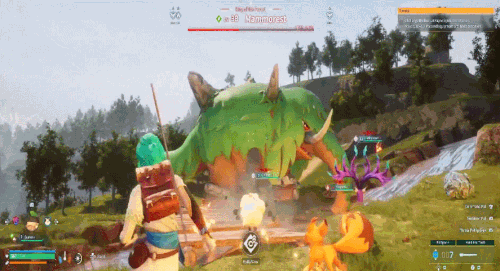
The game's art style is mainly 3D cartoon, and its gameplay integrates open-world exploration, survival building, third-person shooting, and real-time combat.
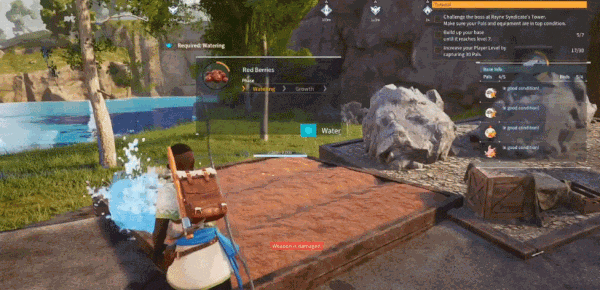
It's both combat and simulation management, and the theme alone is quite appealing. Due to the integration of designs from multiple well-known games, Palworld has sparked doubts among netizens about "plagiarism." Some have even given it the nickname: "Pokemon: Survival Evolution!"
Some players have become addicted to the game and discovered special gameplay:

In any case, it must be acknowledged that Palworld has hit the players' pain points in terms of playability and theme, filling a long period of game drought. Many people plan to play this game extensively during the Chinese New Year.
Could it be that Palworld was designed by AI?
In addition to its unexpected popularity, another unimaginable aspect is that Palworld comes from a "small workshop," with only 10 employees when the project started.
In the game Palworld, the author has designed a rich and vibrant (also full of déjà vu) world.
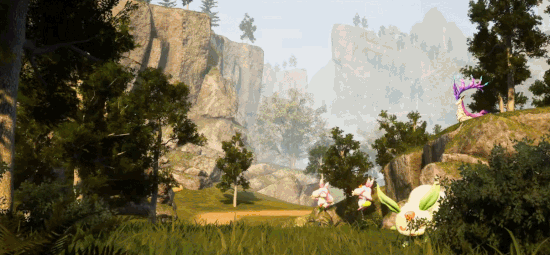
However, the project that created so much content turned out to be a makeshift operation.
After Palworld became popular, Pocketpair's president, Takuro Mizobe, wrote an open letter on January 16th, which players dug up and carefully examined. It not only expressed gratitude for the players' support, but also revealed many details about the development and design process.
This includes the president realizing that he had no idea how to make gun movements, so he found a wild and inexperienced enthusiast online:
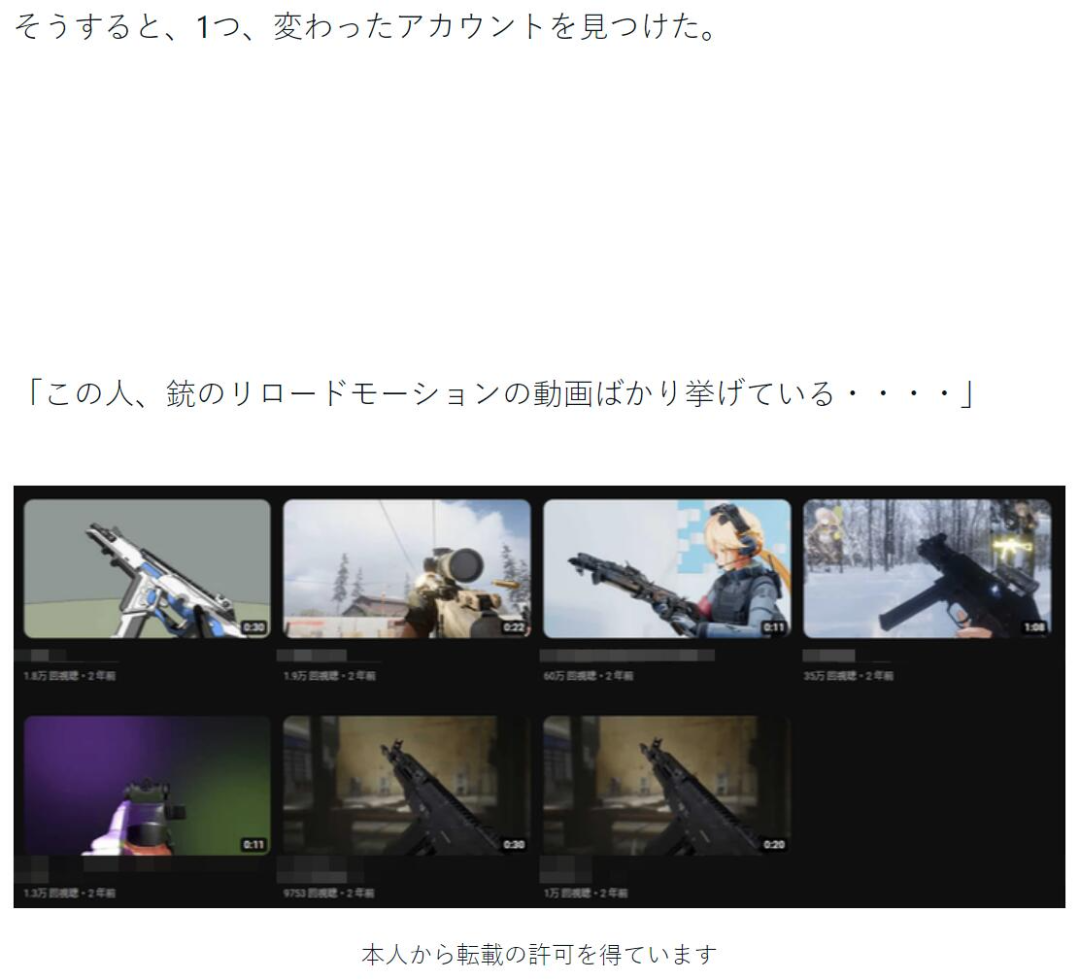
Before the release of the first demo trailer, the president received an email from an experienced design engineer who came to join the team. However, this expert only knew how to use Unreal Engine, not Unity, so all the old code was discarded, and everyone started learning UE4 from scratch while developing the new game.
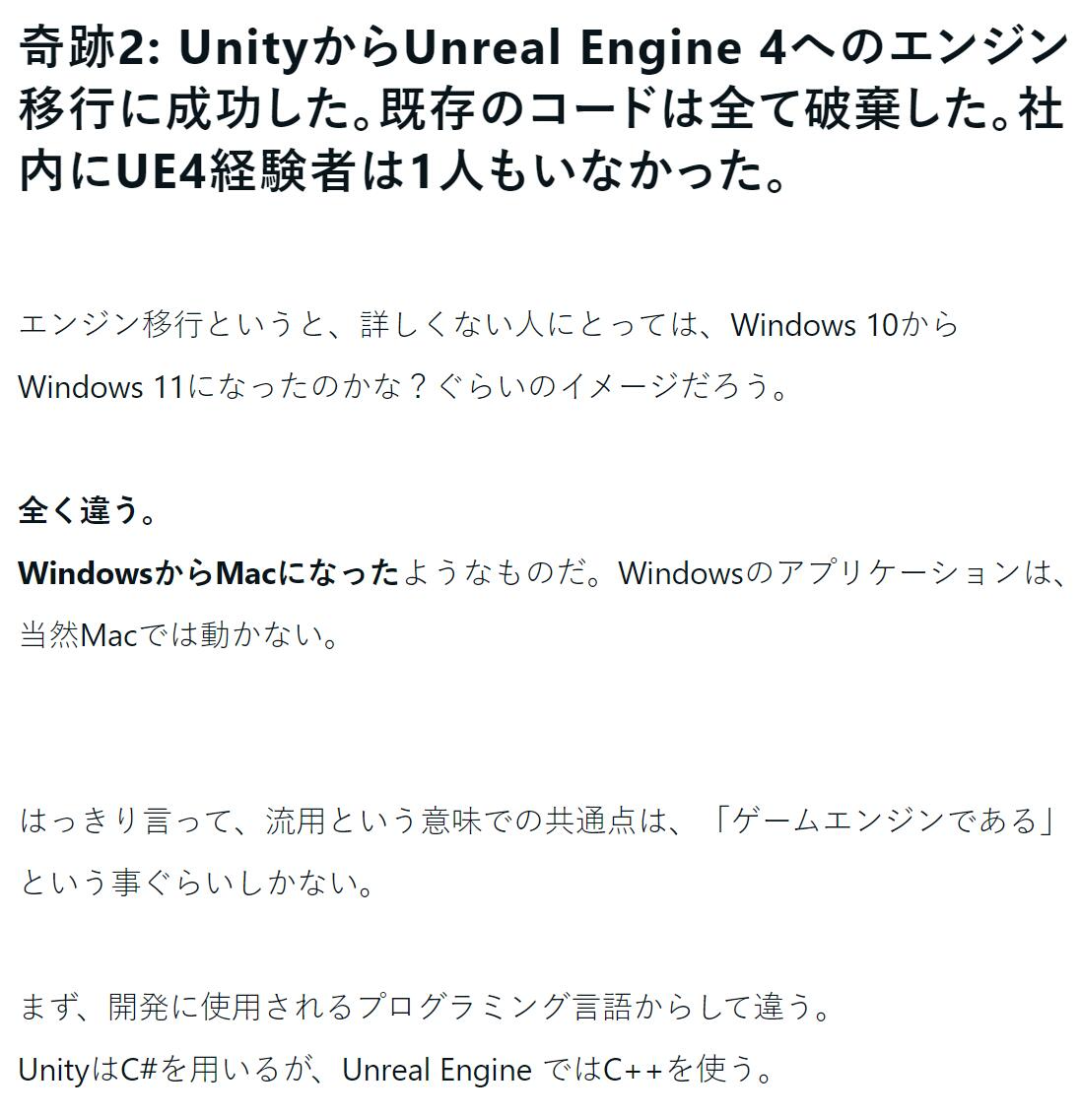
The most crucial part of the game, the 3D model design of the "pets" Palus, was where the president noticed the difficulty after starting production. They spent a month creating a Palu, limited to just the 3D model… Yes, no one in the company had done this before.

In addition, they hadn't considered things like skeletons and different movements, and the president only realized this about six months into the development. It seemed to be too late.
One day, he received a call from a human resources company, which brought in a manager, and the company finally settled on a system for mass-producing movements.
There's also the magical original artwork. When the artist for Palworld applied on Twitter, she was rejected by the president. She was a recent graduate who had applied to nearly a hundred companies but had been rejected by all of them.

The president said she was a rare genius, producing drawings four to five times faster than any artist he had ever seen. Thanks to her, the game now has 110 Palus.
By the way, even in "Monster Hunter World," there are only about 50 types of monsters.
After more than three years and spending over 1 billion yen, with an additional 40 employees and outsourcing, the first version of Palworld was born.
Considering all these descriptions, it's hard not to suspect AI's involvement.
Some netizens accused Pocketpair of "using AI" to generate elements in the game, and some game developers criticized this practice.
Del Walker, a senior artist at Naughty Dog, tweeted, "Although there is no evidence yet, my intuition tells me that the production method of 'Palworld' is malicious."
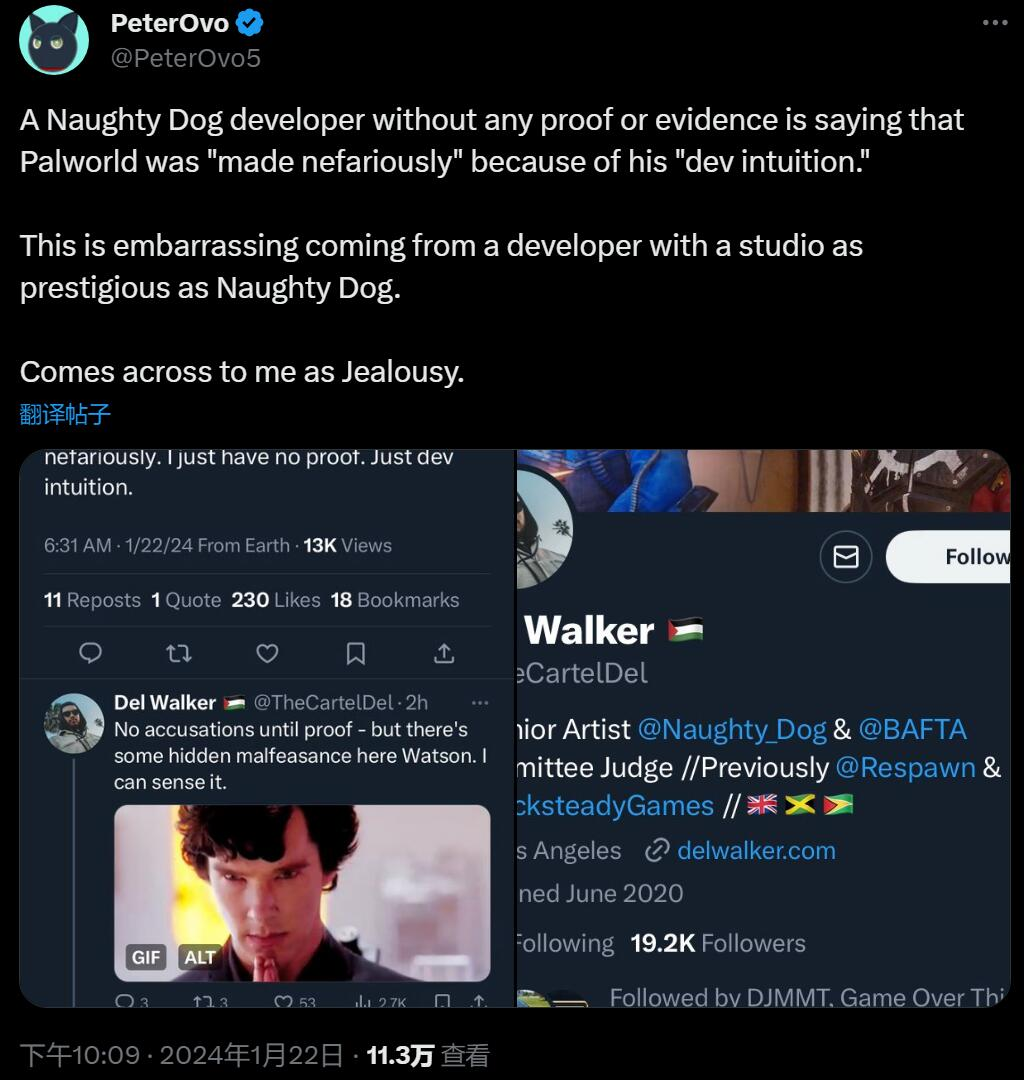
Indeed, from an engineering perspective, a large number of complex 3D models and original artwork, their various movements and reactions, are not simple tasks to consider.
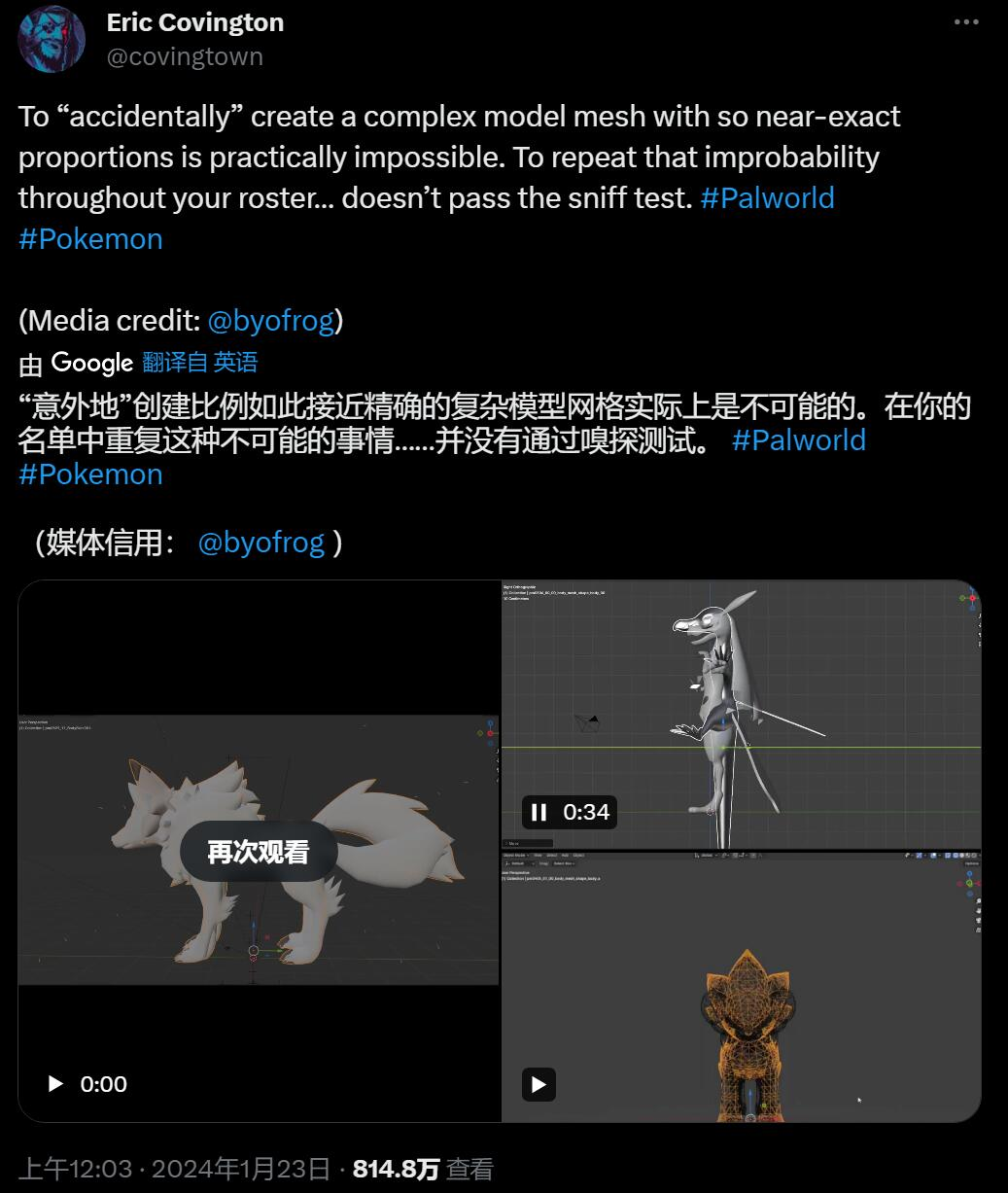
Moreover, Pocketpair's president, Takuro Mizobe, is a proponent of generative AI and has shared multiple dynamics on Twitter about using AI technology for game production:
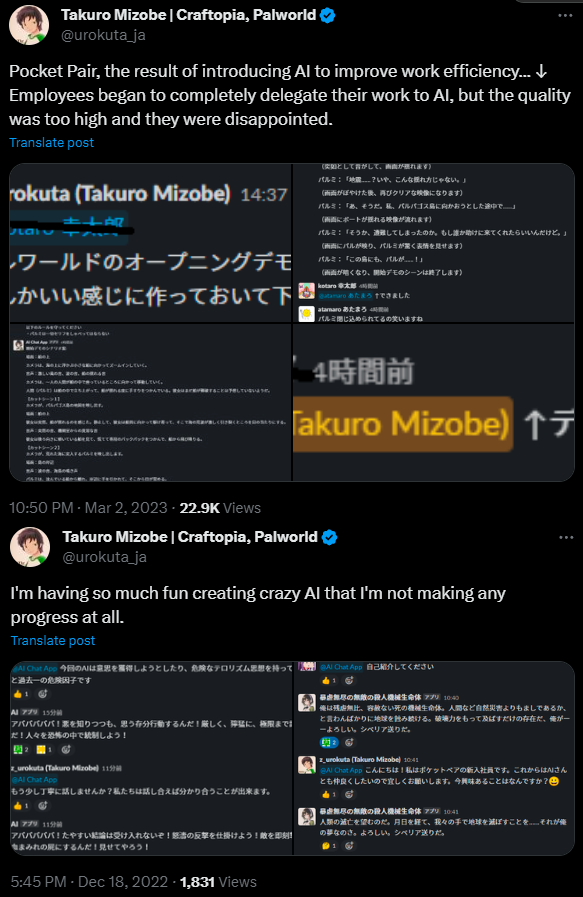
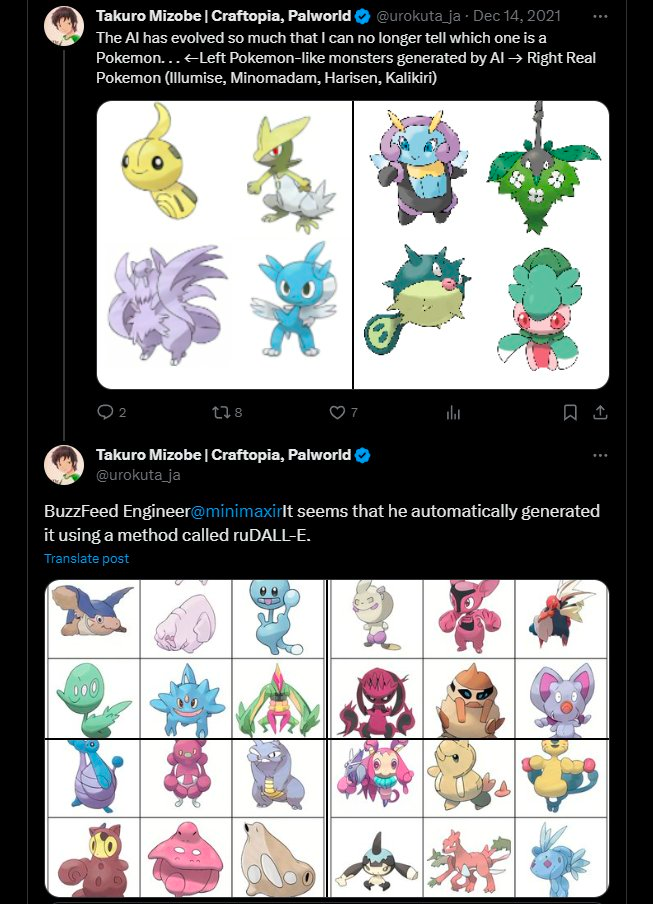
So far, all the points of doubt seem to have not been confirmed. However, there is some evidence: in 2022, the Pocketpair team created a game called AI: Art Impostor, in which players must use an AI art generator as part of the game, leading some to wonder if similar technology is at play in the game Palworld.
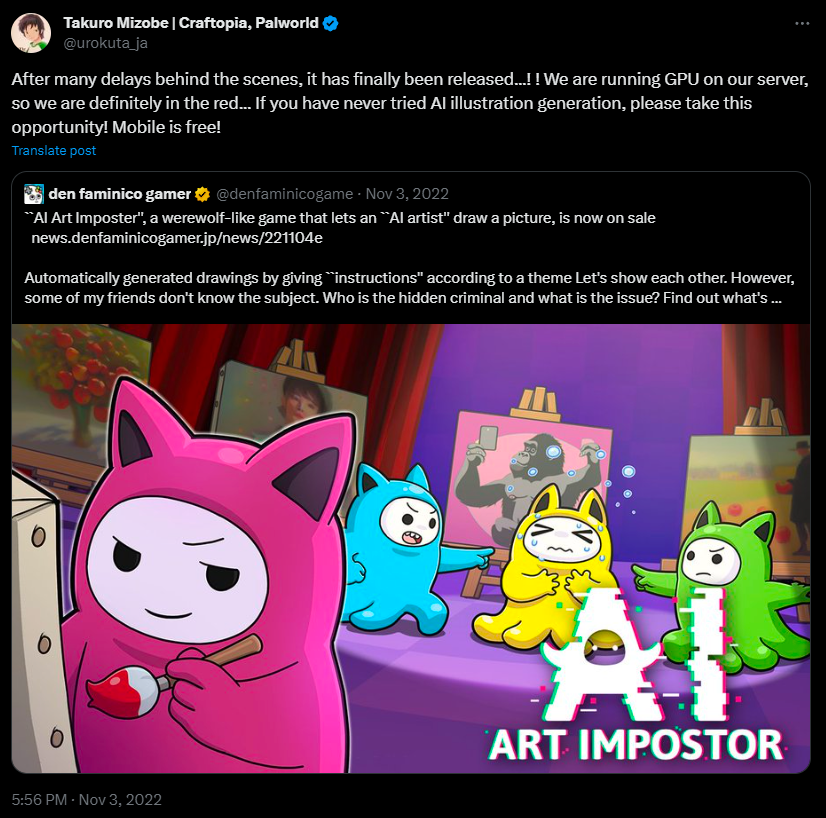
Generative AI, how is it revolutionizing the gaming industry?
Regardless of how Pocketpair responds, we know that due to the advancement of generative AI technology, a new revolution in the gaming industry is indeed taking place.
Last year, developers used AI to develop "Angry Pumpkins," with GPT-4 responsible for all the coding work, and DALL・E 3 and Midjourney responsible for the graphics.
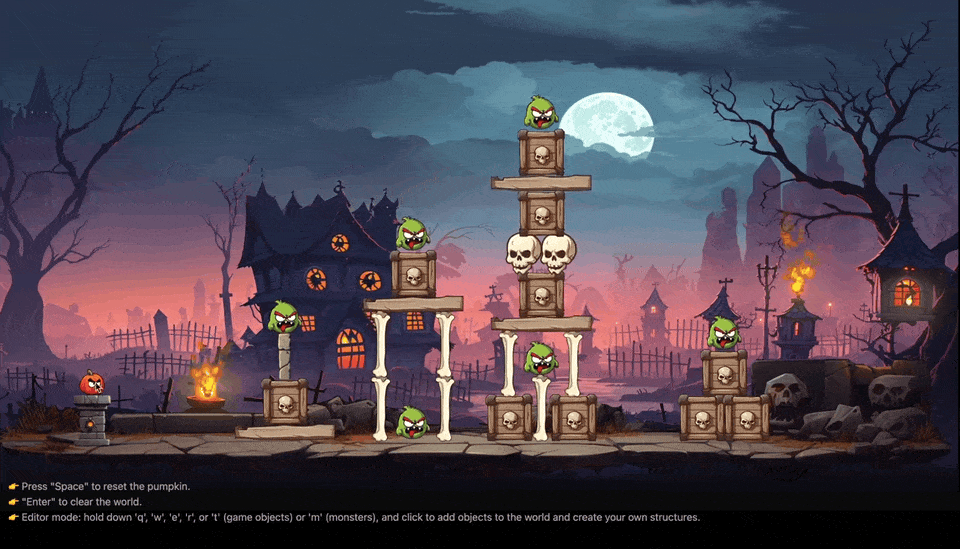
While this game is very simple, it demonstrates the cost savings in game production brought about by generative AI. After all, when "Angry Birds" was first released in 2010, the cost was as high as $140,000.
At the same time, generative AI can provide more dynamic, natural, and diverse game content, making characters and virtual worlds more expansive, personalized, and lifelike, transforming the game world from its current scripted and limited interaction to a dynamic experience driven by players, thereby increasing player engagement, retention, and other factors.
Specifically, it can be analyzed from several aspects:
Authenticity of character design. One of the first game features that generative AI has changed is character design. First, non-player characters (NPCs), or video game characters not controlled by players. Traditionally, NPCs have run on limited, pre-made scripts, making them appear rather stiff. Generative AI will help these characters become more adaptive, providing players with a more intelligent, natural, and unpredictable experience. Playable characters or avatars also benefit from the advancements in generative AI, gaining higher customizability. For example, generative AI algorithms can expand the range of available character features, allowing players to customize appearance, clothing, and contextual behavior based on the game situation.
Flexible adjustment of gameplay. With the improvement of generative AI in character functionality and customization, it will also provide each player with a unique, real-time gaming experience. From professional players to beginners, and everything in between, players' skills and expertise vary greatly. Generative AI can analyze player behavior, predict player skills, and then adjust the game level in real time based on each player's situation, reducing the chances of players feeling bored and wanting to quit.
Expanding the game world. The game world is an important factor in attracting players, and the ability to maintain the interest and continuous development of these worlds is crucial for maintaining interaction. Procedural content generation (PCG) can automatically generate vast, adaptive game environments, replacing static, pre-designed worlds. Using AI algorithms, PCG can generate nearly infinite variations of game worlds, characters, and stories, thereby increasing playability. While players gain ever-changing game environments, AI-driven PCG also helps game developers reduce the time and effort required to design game content, speeding up product release. Game developers can quickly create many unique virtual worlds without manually managing every design detail.
Smoother animations and graphics. As the PCG game world expands, animations and graphics must also improve. AI-driven algorithms can provide texture synthesis capabilities and create realistic, high-quality textures for game objects and environments. For characters, generative AI can help create smooth, fluid, and realistic animations, thereby increasing engagement and entertainment value.
Story progression. Generative AI can customize dialogue, narrative, and plot based on player choices, enhancing the dynamic nature of the story in generative games, providing players with highly personalized, interactive, and immersive gaming experiences. In addition, NLP models can enhance chat effects in games, creating natural, real-time interactions.
Although generative AI can significantly change and enhance the gaming experience, to fully realize the potential of generative AI, game companies must first obtain suitable storage infrastructure. Otherwise, the deployment of generative AI often stalls in the last mile. This is because many companies currently use different IT systems, which use traditional data storage systems not designed for real-time processing of AI workloads and unstructured data. Modern storage solutions with distributed storage, data compression, and efficient data indexing capabilities can support the speed and scale required by AI.
Another point to note is that copyright infringement is currently the most concerning issue in the AI field. Generative AI model manufacturers such as OpenAI, Google, Microsoft, Midjourney, and Stability AI are facing or have faced lawsuits.
Recently, Steam announced that game developers need to publicly disclose whether they used generative AI tools to create games, including disclosing all AI-generated art, code, or music used in their games for Steam review before they can publicly release their games on the software market. Game manufacturers need to commit that pre-generated materials do not contain any illegal or infringing content, or mislead players through false marketing. If the game supports real-time generated content, they must also explain what protective measures have been taken to prevent AI from making any improper or illegal actions in real time.
However, the game "Palworld" does not disclose this information on its Steam page.
Currently, due to the intense pace, the president of the Palworld game company has stated that the designers have even received death threats.

It seems that, whether for the gaming industry or players, a more tolerant attitude should be held towards new things and new technologies.
After all, the innovation brought about by new technologies is gradually unfolding before us.
Reference materials:
https://note.com/pocketpair/n/n54f674cccc40#33883a37-8fdb-4f0d-ab06-853c8aa8be4a
https://www.polygon.com/24047254/palworld-pokemon-animal-cruelty-debate-ai-controversy
https://www.youtube.com/watch?v=uV0zfAwazcs
https://www.theregister.com/2024/01/10/developers_steam_ai/
免责声明:本文章仅代表作者个人观点,不代表本平台的立场和观点。本文章仅供信息分享,不构成对任何人的任何投资建议。用户与作者之间的任何争议,与本平台无关。如网页中刊载的文章或图片涉及侵权,请提供相关的权利证明和身份证明发送邮件到support@aicoin.com,本平台相关工作人员将会进行核查。




